Place Names of the Field
|
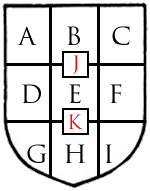 |
POSITIONS AND PARTITIONS OF THE FIELD
Place Names of the Field
|
 |
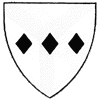 In fess In fess |
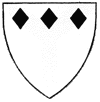 In chief In chief |
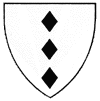 In pale In pale |
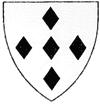 In cross In cross |
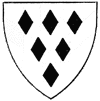 In pile In pile |
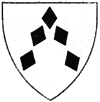 In chevron In chevron |
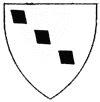 In bend In bend |
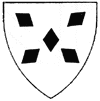 In saltire In saltire |
PARTITIONS OF THE FIELD
Although a shield may consist of a single charge upon a single color field, often the field is partitioned (i.e., divided) into two or more colors. A partitioned shield is blazoned as parted per the partition type. The colors of the sections are blazoned immediately after, starting with the upper and/or leftmost color. For example, a shield which was divided horizontally into an green upper section and a gold lower section would be:
parted per fess vert and or.
These partitions have a basic relationship with ordinaries, a type of charge often found in heraldry. A horizontal division of a field is parted per fess, while a horizontal band of blue on a background of silver is azure a fess argent.
A third variation of these basic divisions of the field are the diminutives of partitions. These divisions are smaller versions of the ordinary repeated many times. This type of partition is properly blazoned by including the number of pieces, as is done for the examples below.
A final aspect of partitions which should be mentioned in the combination of partitions. This is when a shield has been divided are in the basic partitions, and then one of those sections has been further subdivided.
A variation of this type of partition is the counterchange. This is the term used to blazon a shield wherein the colors have been inversed across a partition line. For example, a shield which was red on the left half and silver on the right, charged at the center with a five pointed star which was silver on the left half and red on the right, would be blazoned:
gules a mullet argent counterchanged per pale.
All divisions of the field can be made with simple (i.e., strait) lines or with a variety of non-straight lines, which include but are not limited to: engrailed, invecked, embattled, indented, dancetté, wavy, nebuly, raguly, potenté, dovetailed, flory counter-flory, and rayonné.
| per fess | per pale | per cross or quarterly | per chevron | |
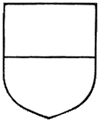 |
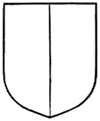 |
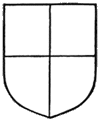 |
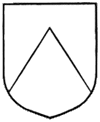 |
|
| per bend | per bend sinister | per saltire | per pall | per pall, reversed |
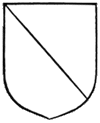 |
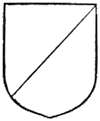 |
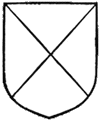 |
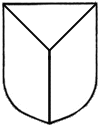 |
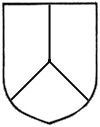 |
| barry of
eight argent and sable |
barry nebuly
of six argent and gules |
paly of six azure and argent |
bendy of
eight argent and gules |
chevronelly
of six gules and argent |
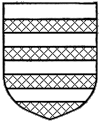 |
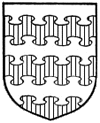 |
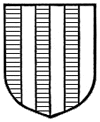 |
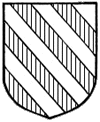 |
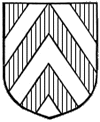 |
| per fess, the upper half per pale azure and gules, the lower half argent | per pale, the dexter half argent, the sinister half per fess gules and azure | per bend, the dexter half argent, the sinister per bend sinister gules and azure | argent, a pale vert counterchanged per fess |
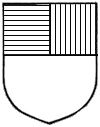 |
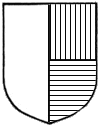 |
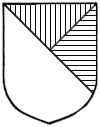 |
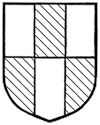 |
| engrailed | invecked | indented | dancetté or dancetty |
 |
|||
embattled |
raguly |
potenté |
dovetailed |
wavy |
nebuly |
rayonné |
fleury-counterfleury |
 |
 |